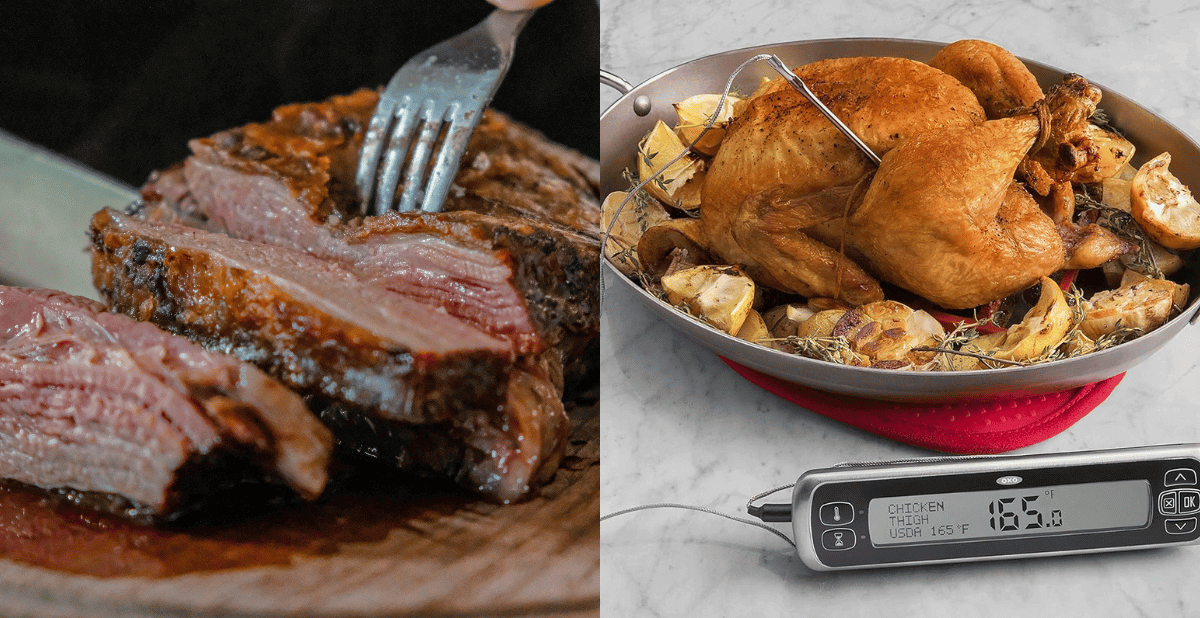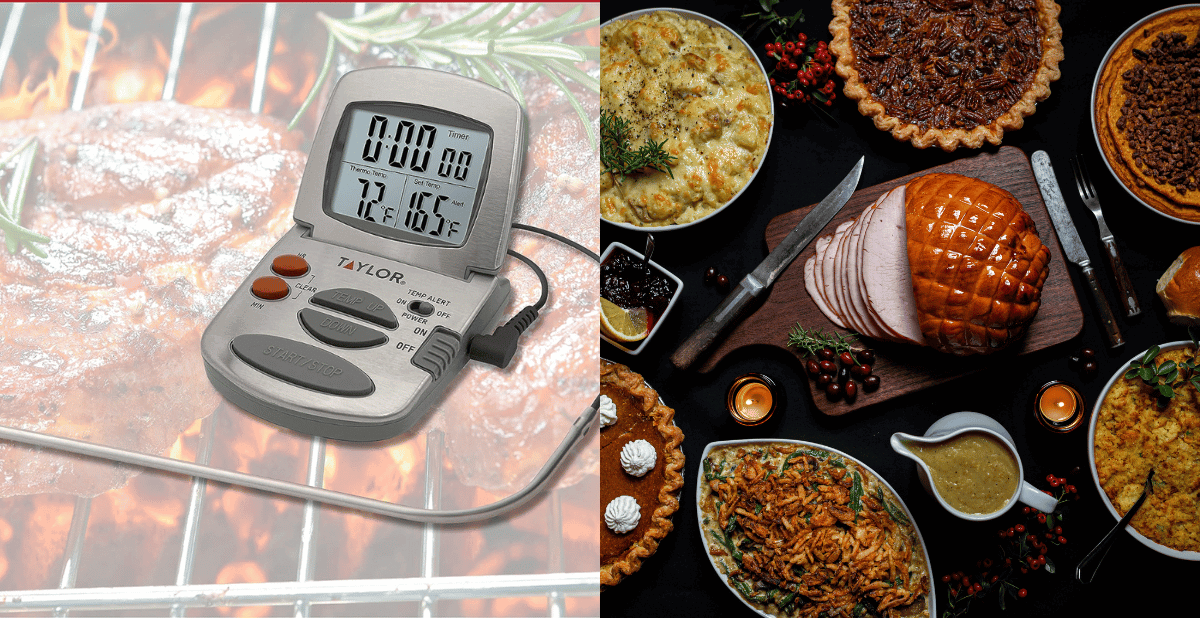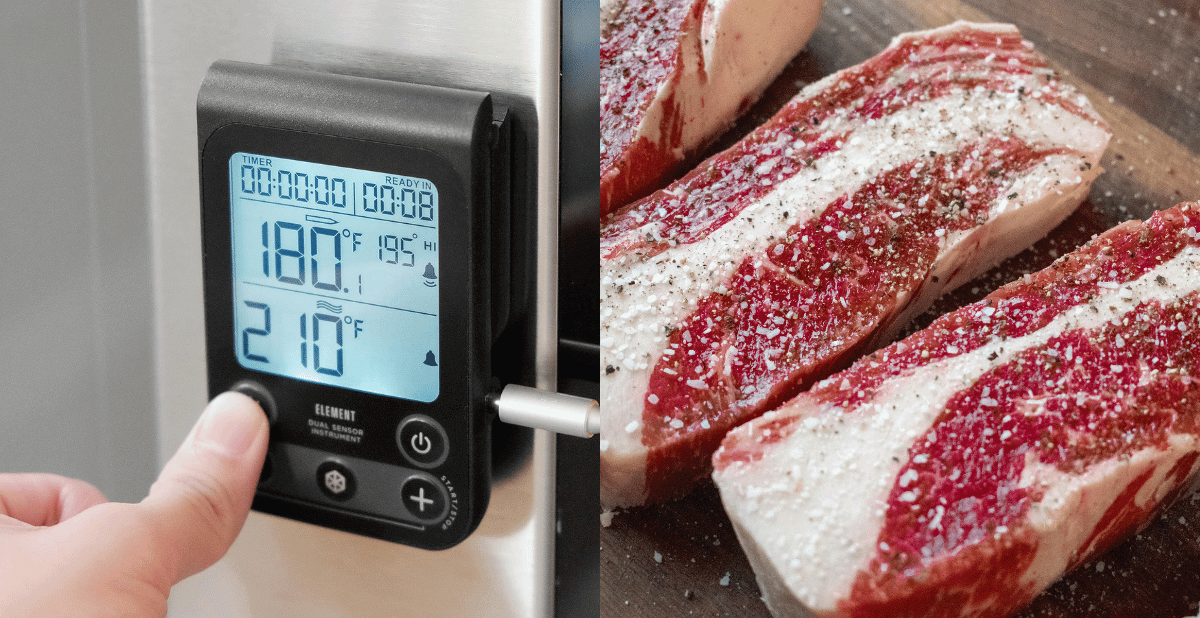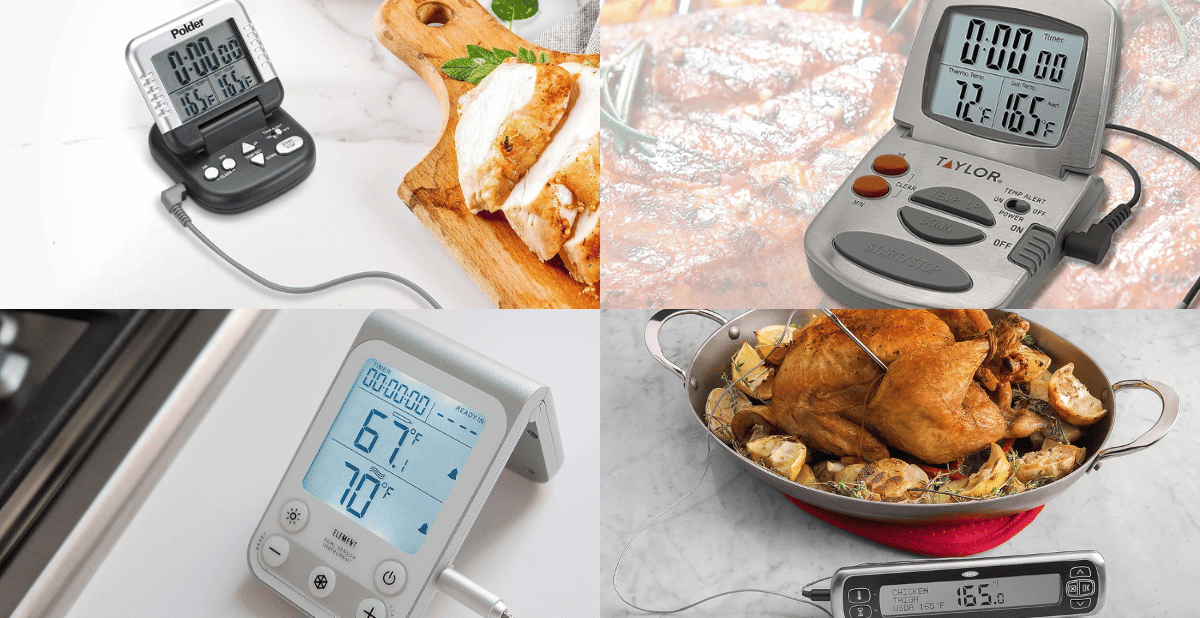Cooking is an art that requires precision, especially when it comes to temperature. One common question is: can a digital thermometer be used in the oven?
Whether you're a seasoned chef or a home cook, understanding the importance of accurate temperature readings is crucial for perfecting your dishes.
Let's dive into the details and find out.
Key Takeaways:
- Understanding the different types of thermometers and their suitability for oven use.
- Learning how to properly use a digital thermometer in the oven to ensure food safety.
- Recognizing the importance of accurate temperature readings for optimal cooking results.
What is a Digital Thermometer?
A digital thermometer measures temperature using electronic components.
Unlike traditional dial thermometers, digital versions provide a quick and accurate temperature reading, essential for many cooking tasks.
They come in various forms, including instant-read digital and probe thermometers designed for specific uses.
Types of Digital Thermometers
Not all digital thermometers are created equal.
Instant-read digital thermometers are designed to measure food temperature quickly but are not meant to be left in the oven.
On the other hand, probe thermometers come with a heat-resistant wire that allows the probe to remain in the food while it cooks in the oven, providing real-time temperature updates.
Can You Leave a Digital Thermometer in the Oven?
The answer depends on the type of digital thermometer.
A probe thermometer is designed to withstand high temperatures and can be left in the oven.
It continuously monitors the internal temperature of your dish.
However, an instant-read digital thermometer should not be left in the oven, as it is not built to withstand extended periods of heat.
Understanding Oven-Safe Thermometers
Oven-safe thermometers are specifically designed to withstand the environment inside an oven.
They can endure high temperatures and are safe to be placed on an oven rack or inserted into food while it cooks.
To avoid mishaps, you must ensure that the thermometer you use is labeled oven-safe.
The Importance of Accurate Temperature Readings
Accurate temperature readings are vital for cooking food to the desired temperature.
This not only ensures that your food is cooked to perfection but also that it is safe to eat.
Undercooked food can pose health risks, while overcooked food can lose flavor and texture.
How to Use a Probe Thermometer in the Oven
To use a probe thermometer, insert the probe into the thickest part of the meat, avoiding fat and bone.
Set the desired temperature on the thermometer's digital display and place the food in the oven.
The heat-resistant wire will keep the probe in the food, providing an accurate temperature reading without opening the oven door.
The Role of Oven Temperature in Cooking
The temperature inside your oven can vary by a few degrees from what is indicated on the dial.
This is where an oven thermometer comes in handy.
It can be placed inside the oven to give an accurate reading, ensuring that your food cooks at the correct temperature.
Calibrating Your Digital Thermometer for Oven Use
Have you ever wondered if your digital thermometer is showing the right temperature?
Calibrating your thermometer is crucial, especially when aiming for that perfect roast.
Most digital thermometers can be calibrated using a simple ice-water method.
Just fill a glass with ice, add cold water, and let it sit for a few minutes.
Then, insert your thermometer into the glass, ensuring it doesn’t touch the sides.
It should read 32 degrees Fahrenheit, the freezing point of water.
If it doesn’t, consult the manufacturer's instructions to adjust it accordingly.
The process might differ slightly if you're using a dial thermometer.
These analog devices often have a calibration nut on the underside that can be adjusted.
A properly calibrated thermometer is your secret weapon in the kitchen.
It ensures that your oven is at the right temperature, which is vital for baking delicate pastries or cooking steak to a perfect medium rare.
Remember, an accurate reading distinguishes culinary success from an underwhelming meal.
Choosing Between an Instant Read Thermometer and an Oven-Safe Thermometer
Deciding between an instant-read thermometer and an oven-safe thermometer can be a bit of a puzzle.
Let's break it down. An instant-read thermometer is designed to quickly measure the temperature of your food, usually within a few seconds.
It's not meant to be left in the oven, as the electronics aren't typically heat-resistant to high temperatures.
Instead, you'd use it to check the doneness of your meat before removing it from the oven.
It's perfect for those who love a quick and accurate reading without much fuss.
On the other hand, an oven-safe thermometer is built to withstand the oven's heat for extended periods.
You can put it in your dish, set your oven to the desired temperature, and leave it in while your food cooks.
This type of thermometer often has a probe connected to a digital display outside the oven, allowing you to monitor the temperature without opening the door.
It's ideal for long roasts or smoking meat, where maintaining a consistent temperature is key.
So, consider your cooking style and choose the thermometer that best suits your needs.
High Temperatures and Digital Thermometers
Digital meat thermometers are designed to withstand the high temperatures of cooking meat.
However, a thermometer with a suitable temperature range is important when using extremely high-temperature cooking methods, such as deep frying.
The Difference Between Oven Thermometers and Meat Thermometers
Oven thermometers measure the temperature inside the oven, while meat thermometers measure the internal temperature of the food.
Both are important for achieving accurate temperatures and ensuring your food is properly cooked.
Tips for Maintaining Your Digital Thermometer
It's important to maintain your digital thermometer properly to ensure that it provides accurate readings.
This includes regular calibration, cleaning after each use, and storing it in a safe place where it won't be damaged by heat or moisture.
When to Use an Instant Read Digital Thermometer
An instant-read digital thermometer is perfect for quickly checking the temperature of food without leaving it in the oven.
It's ideal for tasks that require a quick temperature check, such as checking the doneness of steaks or burgers on the grill.
The Benefits of Using a Digital Meat Thermometer
A digital meat thermometer can help you cook meat to the perfect level of doneness, whether you prefer it rare, medium, or well-done.
You can ensure your meat is always cooked to the desired temperature by monitoring the internal temperature.
Avoiding Common Mistakes with Digital Thermometers
One common mistake is opening the oven door frequently to check the temperature, which can lead to heat loss and fluctuating oven temperatures.
A probe thermometer can help avoid this issue by allowing you to monitor the temperature without opening the oven door.
Selecting the Right Thermometer for Your Cooking Needs
When choosing a thermometer, consider the types of dishes you frequently cook and the temperature range you'll need.
A versatile thermometer that can handle various temperatures and cooking methods is valuable for any kitchen.
Safety Precautions When Using Thermometers in the Oven
Always handle thermometers with care, especially when they're hot.
Use oven mitts to remove them from the oven.
Be cautious of the heat-resistant wire on probe thermometers, as it can still be hot even after the oven is turned off.
Until Next Time...
In summary, whether a digital thermometer can be used in the oven depends on the type of thermometer.
Probe thermometers are designed to be oven-safe and can remain in the food while it cooks, providing continuous temperature readings.
Instant-read digital thermometers, however, should not be left in the oven.
Accurate temperature readings are crucial for cooking food to perfection and ensuring safety.
You can enhance your cooking experience and achieve delicious results by choosing the right thermometer and using it correctly.
We hope you found our blog helpful.
Happy Cooking,
MommaPuff











